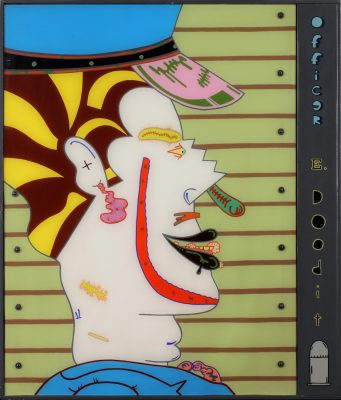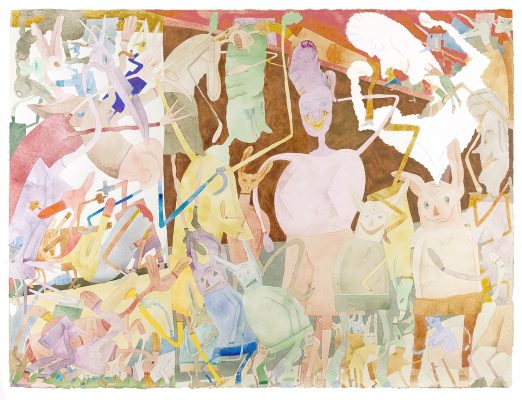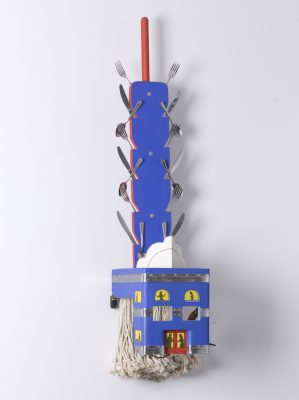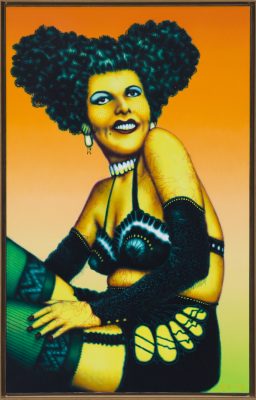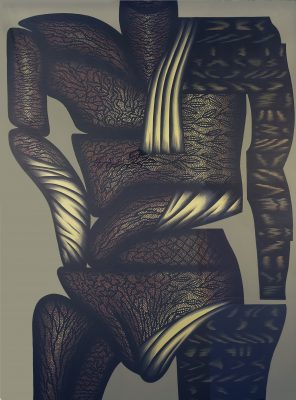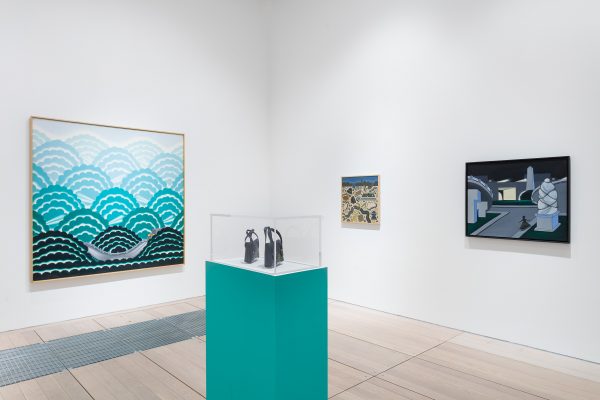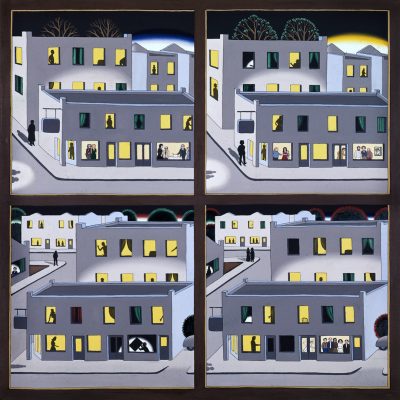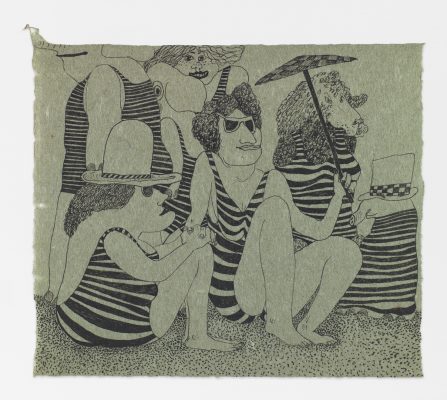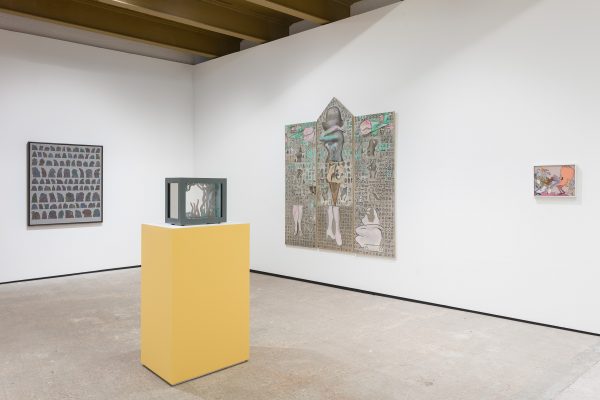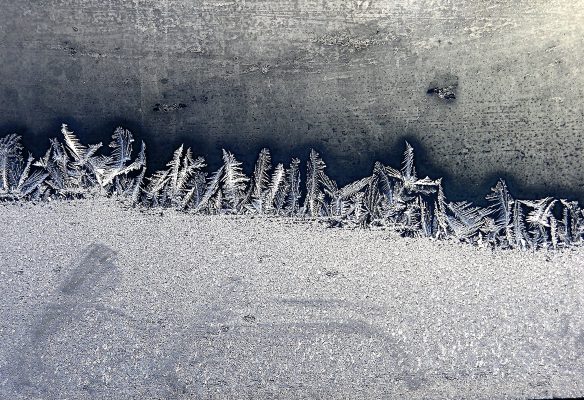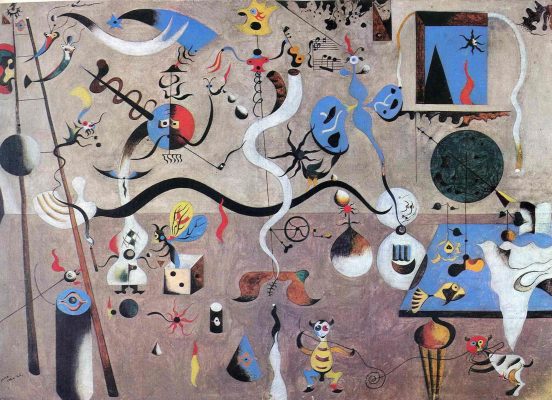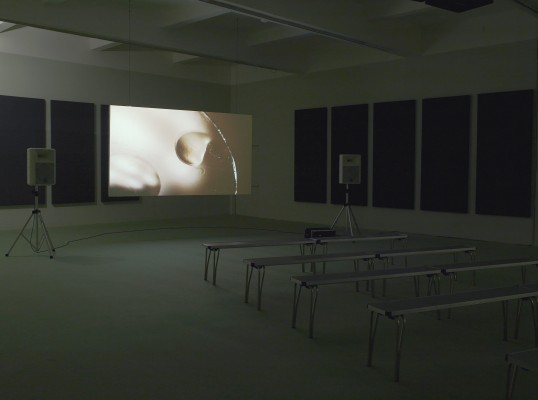At times, the artwork of the Chicago Imagists verges on the gross: that big green bogey dangling from the nostril of Officer E Doodit, a beady-eyed policeman with a bulging neck in Jim Nutt’s painting of 1968, is just the beginning. Nutt’s portrait is part of a new exhibition at Goldsmiths’ Centre for Contemporary Art that explores the gaudy fruits of the Imagists’ labour.
All but one of the 14 artists in the show graduated from the School of the Art Institute of Chicago in the 1960s, studying and working together, exchanging thoughts and techniques. Across two decades they exhibited together in sub-groups with wacky monikers such as the Hairy Who (a riff on the name of a Chicago radio station’s then art critic Harry Bouras) and the Nonplussed Some. Their unconventional displays at Chicago’s Hyde Park Art Centre took place during a period of national unrest that culminated in 1968, the bloodiest year of the Vietnam War, when the streets of Chicago became a battleground between police and anti-war protestors.
Gladys Nilsson was one of the first Imagists to graduate, in 1962. Appearing on all three floors of CCA, her pieces are chaotic and crowded: fantastical creatures jostle for elbowroom in her watercolour MORE FOWL BEASTS (1970), with claw-like fingers and elongated, acute-angled limbs. They’re humorous too: in RENTED BATHING SUITS (1965), a curious crowd in poorly fitting pinstriped swimming costumes share a patch of sand on the beach. A swine-like animal is wearing both a bathing suit and a top hat, while a bespectacled woman with sagging breasts and a slack jaw holds a parasol above a curly-haired sheep.
Like the rest of the Imagists, Nilsson was taught by professors whose interests extended beyond the canon to include non-western practices and quotidian subjects and materials. The artist Ray Yoshida encouraged his students to experiment by drawing with lipstick and mustard. Other tutors introduced folk art, ethnography and surrealism, asking students to pay attention to tribal masks, hand-painted shop signs and comic books. Many of the Imagists painted on Plexiglass, inspired by the reverse graphics on pinball machines, giving their work a glossy sheen.
The Imagists painted, etched and sculpted characters that mirrored the language of sexual commerce they saw advertised around the city. Ed Paschke’s neon-coloured portrait ELCINA (1973) depicts a woman with heart-shaped lips, pastel-blue eye shadow and bouffant hair, wearing black stockings, suspenders and a pointed bra. The painting is violent rather than seductive; Paschke courts the grotesque, exaggerating the image of a pin-up to show up the eroticisation and distortion of women’s bodies.
A number of the professors who taught the Imagists were women – Kathleen Blackshear and Vera Berdich to name two. Perhaps as a result, the collective included far more women than other movements of the 20th century, and much of their art explores the treatment of the female body as a precarious and brutalised object. In Christina Ramberg’s painting DOUBLE HESITATION (1977), a woman’s torso is made from flesh and fabric, her jumbled organs jutting in and out like Jenga blocks on the brink of collapsing.
The Imagists’ non-hierarchical education may have extended beyond the western canon but it didn’t exclude it. Some of the group may have been thumbing their nose at the patriarchy, but many of the works on show echo ‘masterpieces’ that the artists must have seen in the main galleries of the Art Institute. Alabama-born Roger Brown’s quartet of street scenes, THE FOUR SEASONS (1974), brings to mind Edward Hopper’s NIGHTHAWKS, acquired by the Art Institute in 1942. Meanwhile, Brown’s assemblage MASK FOR A WAITRESS (1974), made from a mop head, a leather strap and a load of cutlery, is a nod to Duchamp.
Unlike the previous generation, which painted a bleak picture of Chicago in the wake of the Great Depression, the Imagists celebrated many aspects of the Midwestern city. Brown, for instance, was heavily influenced by its architectural development: in THE GIRL (1969), a solitary silhouette dashes through Chicago after dark, surrounded by newly built bridges and circular interchanges. The group’s messy, insouciant artwork evokes the unbridled chaos of Chicago in the 1960s and 70s – a world away from the clean-cut Campbell’s soup cans of the Pop artists working in New York and Lost Angeles alongside them. Theirs was a carnivorous reaction to everything and anything: an approach that remains relevant in today’s internet age.
